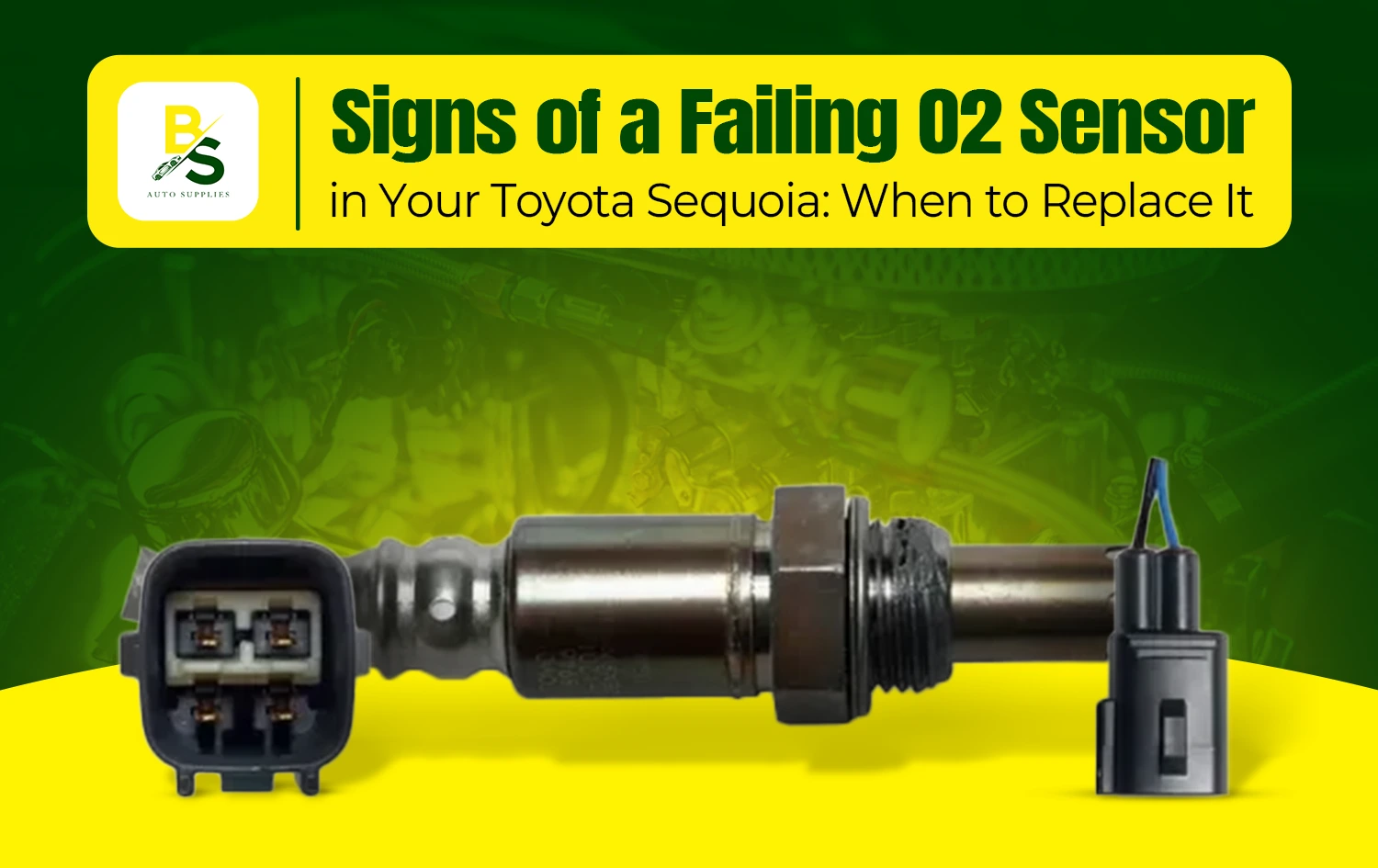A few components play a critical role in maintaining the health and performance of your Toyota Sequoia, such as the O2 sensor, also known as the oxygen sensor. Located in your vehicle’s exhaust system, the O2 sensor measures the amount of oxygen in the exhaust gases and sends data to the engine control unit (ECU). This information helps maintain the optimal air-fuel ratio, maximizing fuel efficiency and minimizing emissions.
If you're experiencing performance issues or unexpected warning lights, your O2 Sensor for Sequoia, Toyota in Brooklyn, may fail. In this blog, we’ll guide you through the warning signs of a bad O2 sensor, its effects on your vehicle, and when to consider a replacement.
What Does an O2 Sensor Do?
Before we get into the signs of failure, it’s essential to understand what an O2 sensor in a car in Brooklyn does. Its primary function is to monitor the level of unburnt oxygen in your exhaust gases. Based on this reading, your car’s ECU adjusts the fuel injection and ignition timing. A properly functioning sensor ensures:
- Better fuel efficiency
- Reduced harmful emissions
- Improved engine performance
- Extended life of the catalytic converter
If the sensor malfunctions, it sends incorrect data, throwing off this delicate balance—and that’s when problems begin.
Top Signs of a Failing O2 Sensor in a Toyota Sequoia
1. Check that the Engine Light is On
One of the first signs is often the illumination of the check engine light. A failing car O2 sensor in Brooklyn frequently triggers a diagnostic trouble code (DTC), which your car’s computer reads as a system malfunction. If you're in Brooklyn and this light appears on your Sequoia, scanning the code at a reliable auto shop like Bs Auto Supplies is worth scanning.
2. Poor Fuel Economy
Has your fuel mileage dropped unexpectedly? A faulty O2 sensor can cause the engine to burn more fuel than necessary. When the sensor sends inaccurate readings, the ECU may think the engine is running lean and overcompensate by adding extra fuel, drastically lowering your MPG.
3. Rough Idling or Engine Misfires
Your O2 sensor in a car in Brooklyn helps maintain the ideal air-fuel ratio. When it's not working properly, your Toyota Sequoia may begin to idle roughly or even misfire. These performance issues are especially noticeable when starting the car or coming to a stop.
4. Failed Emissions Test
In a city like Brooklyn, passing emissions is not just important—it’s mandatory. If your Sequoia fails a standard emissions test, a defective O2 sensor replacement in Brooklyn could be your only option. Replacing it will help reduce harmful gases and bring your car back into compliance.
5. Engine Hesitation or Stalling
Sudden lags in acceleration, hesitation during gear changes, or complete engine stalling are all symptoms of improper combustion—often caused by a failing O2 sensor.
When Should You Replace the O2 Sensor?
Most manufacturers, including Toyota, recommend inspecting or replacing the O2 sensor every 60,000 to 90,000 miles, depending on the model and driving conditions. However, if any of the above symptoms persist, don’t delay.
Waiting too long to replace a faulty O2 sensor for Sequoia, Toyota in Brooklyn, can lead to expensive damage to your catalytic converter or other engine components.
What’s the O2 Sensor Replacement Cost in Brooklyn?
On average, the O2 sensor replacement cost in Brooklyn ranges from $150 to $500, depending on labor rates, your vehicle’s make and model, and whether you're replacing one or multiple sensors. Thankfully, Bs Auto Supplies offers competitively priced sensors and expert recommendations on the best fit for your Sequoia.
If you’re searching for car O2 sensor cost in Brooklyn, always compare quotes, but also consider quality and warranty—especially for a high-performance SUV like the Sequoia.
Where to Find Quality O2 Sensors in Brooklyn?
When searching for a reliable O2 sensor in Brooklyn, you’ll want a supplier that provides:
- OEM-compatible parts
- Knowledgeable support
- Reasonable pricing
- Fast availability
Bs Auto Supplies is a go-to source for high-quality automotive parts, including O2 sensors tailored for Toyota vehicles. Whether you're doing a DIY job or having it replaced professionally, they make it easy to get the right part fast.
Final Thoughts: Don’t Ignore the Signs
Your Toyota Sequoia is built to perform—but it relies on precise sensor data. A malfunctioning O2 sensor for Sequoia, Toyota in Brooklyn, can slowly degrade your vehicle's efficiency, cost you money at the pump, and even damage critical engine components.
So, if your check engine light is on, your fuel economy is dropping, or you're experiencing erratic performance, it's time to act. Seek a trusted supplier like Bs Auto Supplies and explore professional O2 sensor replacement in Brooklyn before the issue escalates.
Keeping an eye out for the signs, knowing when to replace the sensor, and sourcing your parts from a reliable provider will ensure your Toyota Sequoia stays in top shape—on the streets of Brooklyn and beyond.






0 Comments